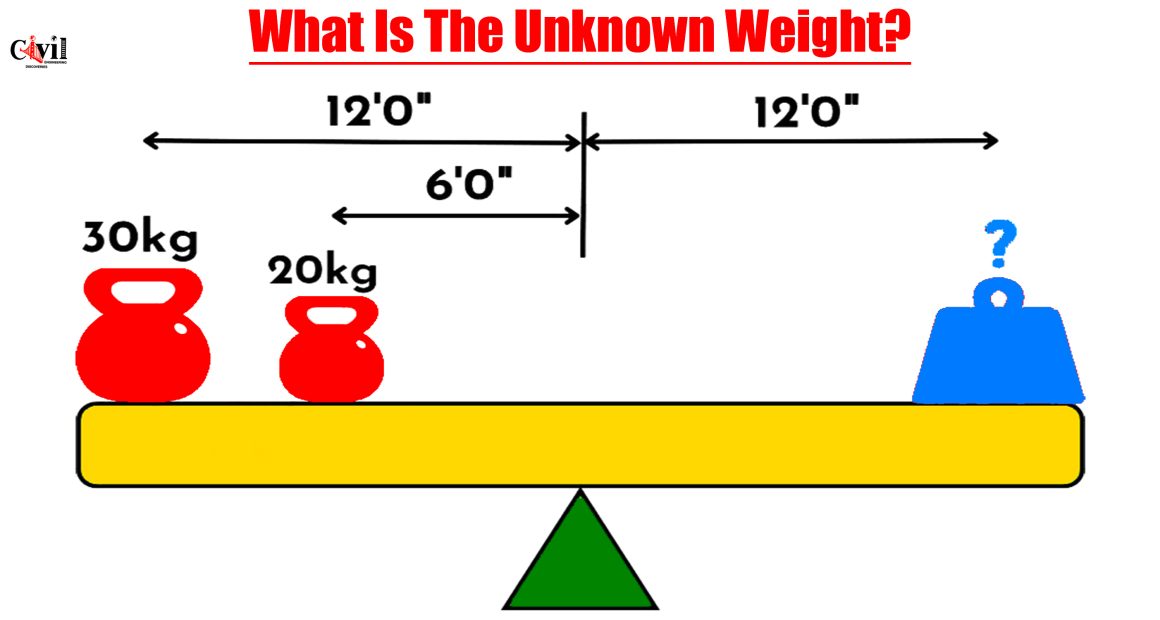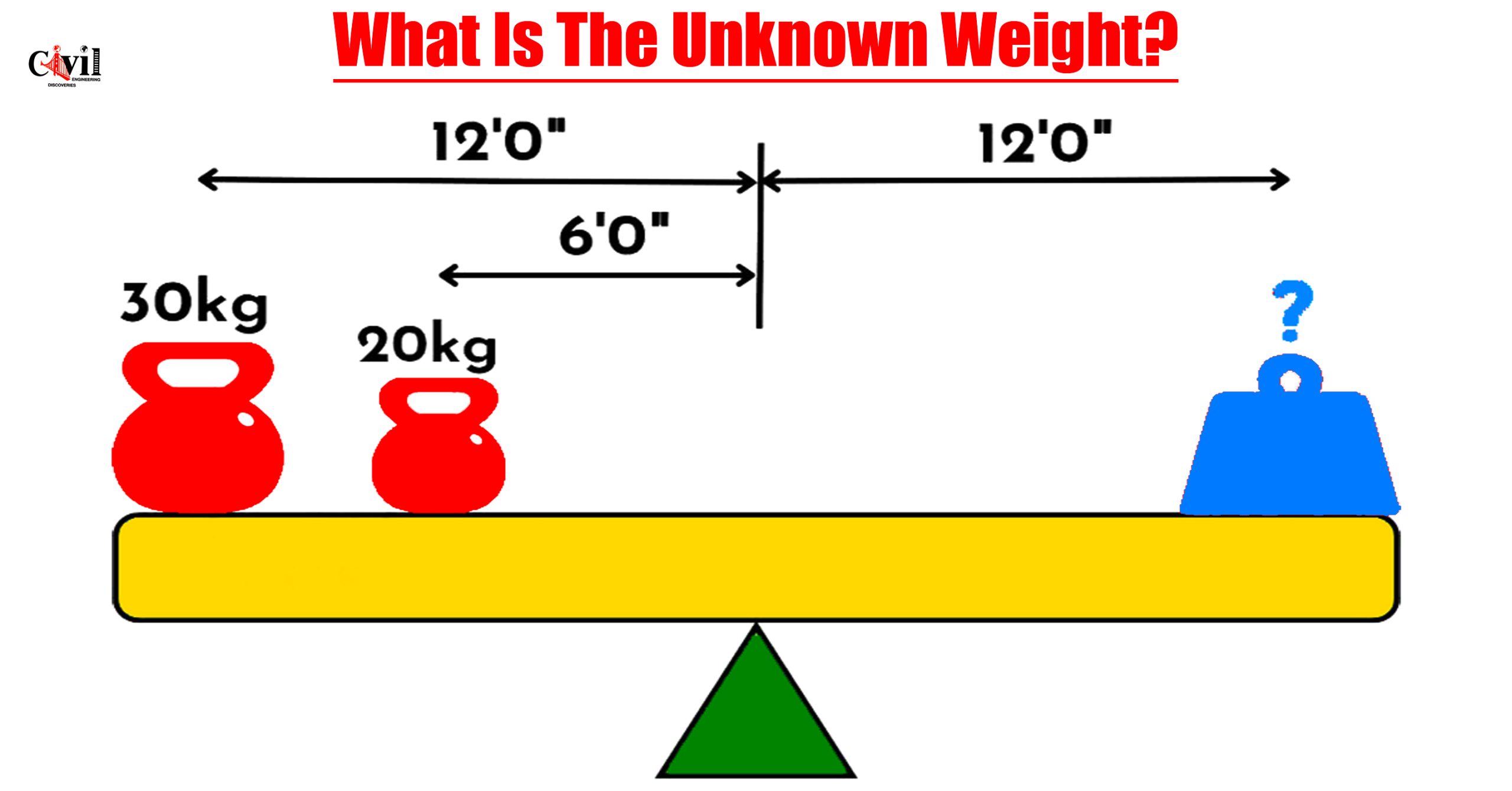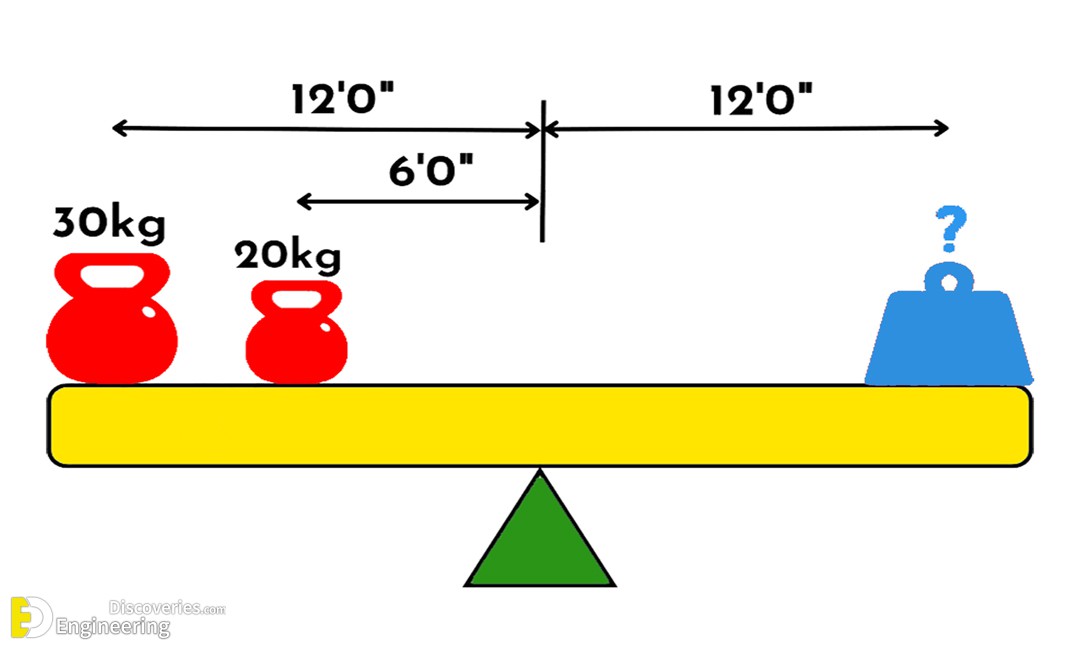Discover the exact method to calculate unknown weights using basic structural engineering principles.
Understanding Moment Balance in Structural Engineering
When analyzing levers and beams, engineers use the principle of moments. This principle states that a system remains balanced if the clockwise moments equal the counterclockwise moments.
Let’s break down this structural engineering puzzle step by step.
Analyzing the Forces and Distances
In the given image:
Left side: Two weights — 30 kg at 12 ft and 20 kg at 6 ft from the fulcrum.
Right side: One unknown weight (?) placed 12 ft from the fulcrum.
We apply the moment of force formula:
Moment (Torque) = Force × Distance from Fulcrum
Calculating Total Moments on the Left
Convert weights to forces. Assuming standard gravity (g = 9.81 m/s²), we can ignore it for now since we’re comparing moments in the same unit system.
Moment by 30 kg = 30 × 12 = 360 kg·ft
Moment by 20 kg = 20 × 6 = 120 kg·ft
Total Moment on Left = 360 + 120 = 480 kg·ft
Balancing the Right Side
Let the unknown weight be x kg.
Moment on right = x × 12 = 12x kg·ft
For balance:
12x = 480
x = 480 / 12
x = 40 kg
Answer: The Unknown Weight is 40 kg
By applying basic static equilibrium principles, the required weight to balance the system is 40 kilograms.
Why Structural Analysis Matters
Understanding torque and equilibrium helps engineers design safe structures, beams, cranes, and bridges. In real-life applications, this concept ensures structural integrity and human safety.
Boost Your Engineering Intuition
If you’re preparing for structural engineering exams or interviews, such puzzles are a must. Mastering these will improve your problem-solving speed and conceptual clarity.
Conclusion: Engineering is Logic, Not Luck
Balancing forces using moments is foundational in structural engineering. This quiz showed a classic lever-based scenario, solved with clear reasoning and basic math.
Keywords: Structural engineering quiz, calculate unknown weight, lever balance problem, moment of force, equilibrium in structures, engineering aptitude question, balance beam physics.
💡 Pro Tip: Practice more real-world problems to enhance your understanding of static equilibrium and beam design.
Stay tuned for more engaging structural engineering puzzles!
Click Here To See Who Is Dead In This Picture? Mind-Blowing Riddle Solved







